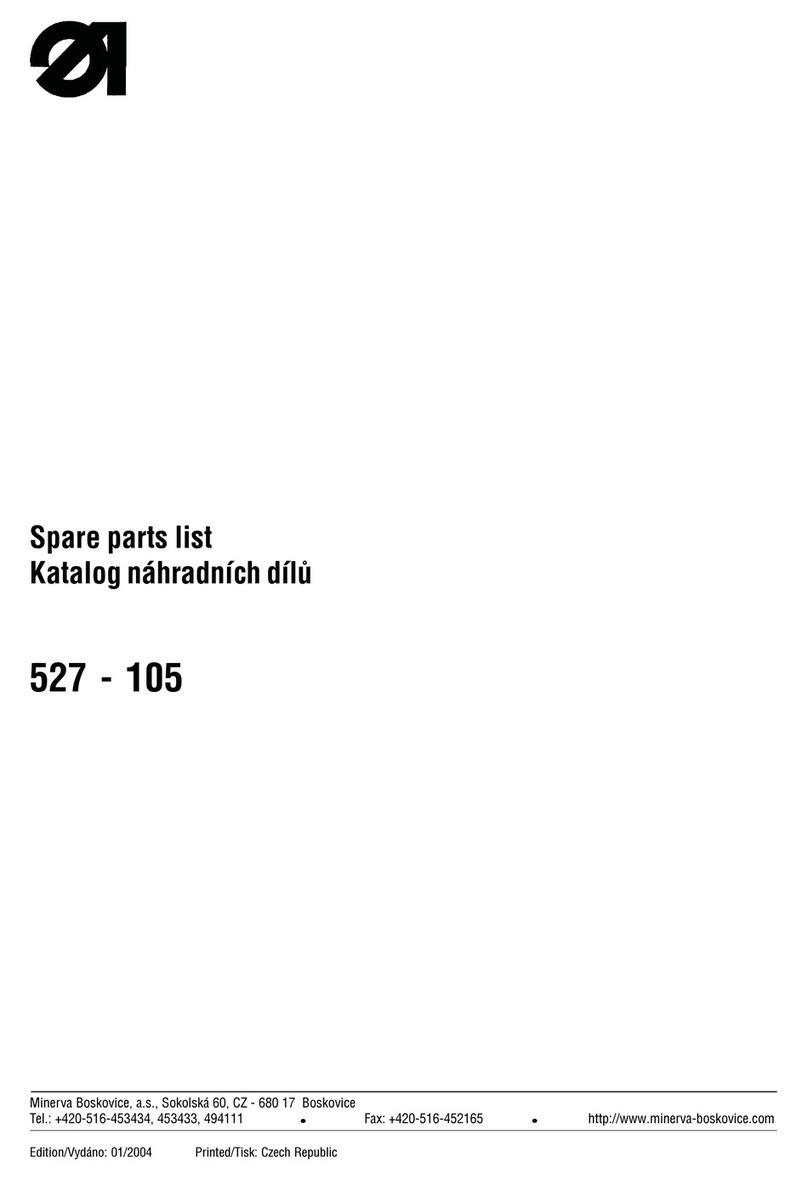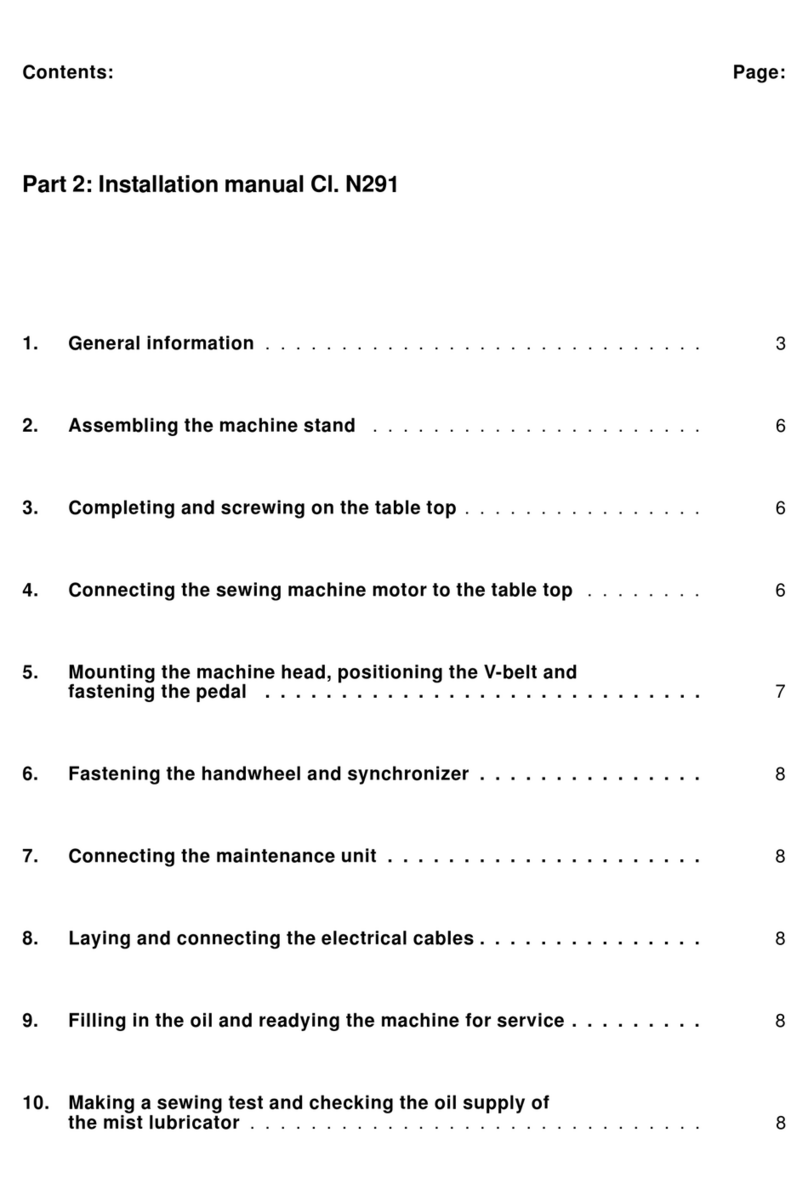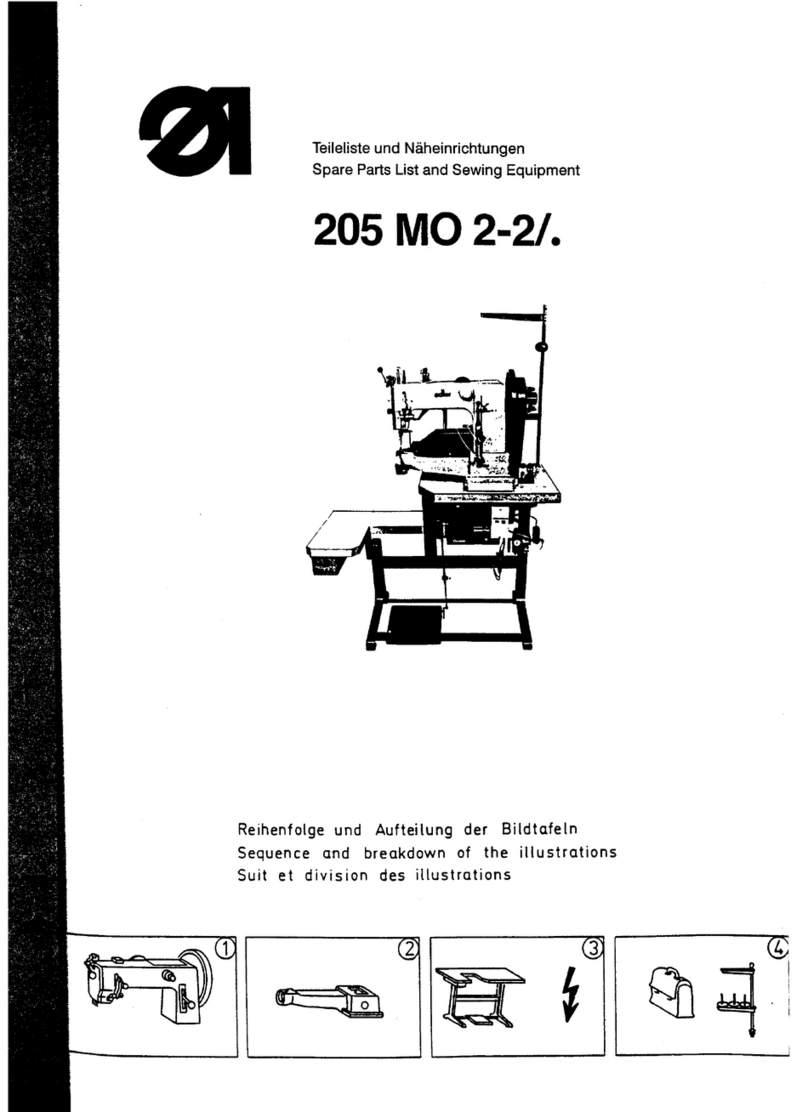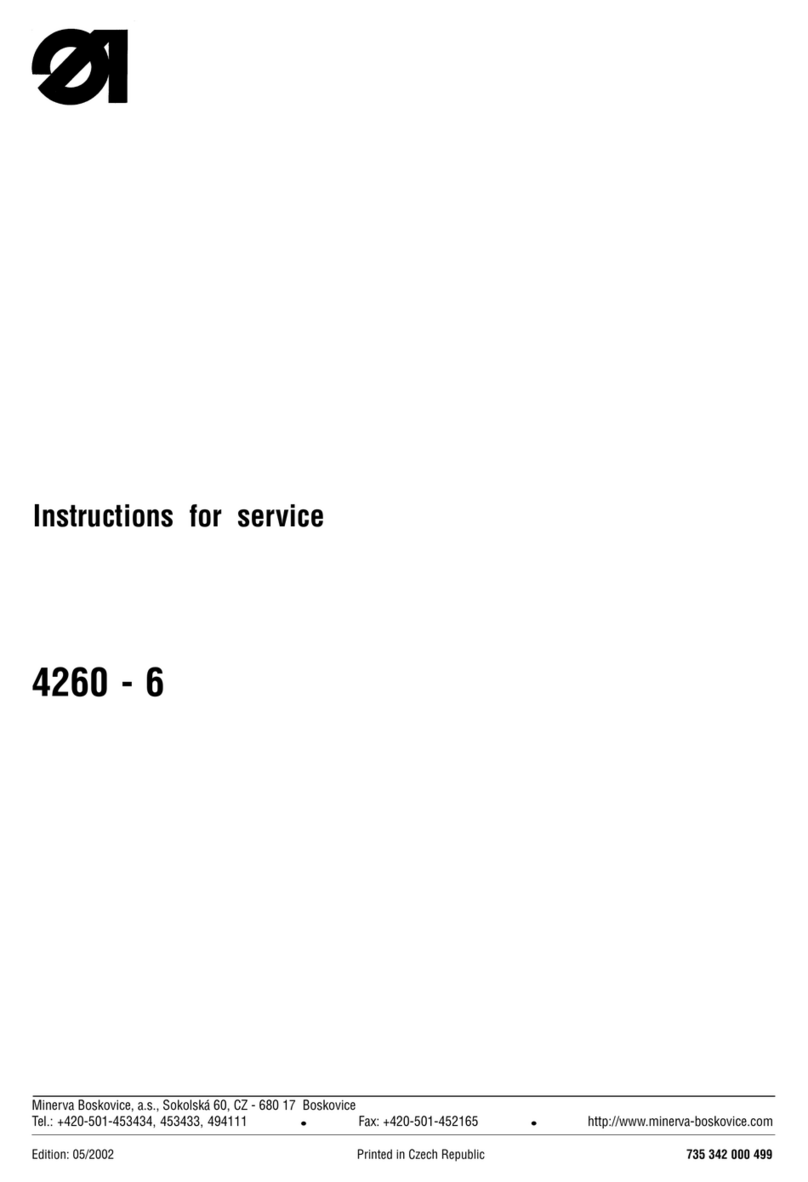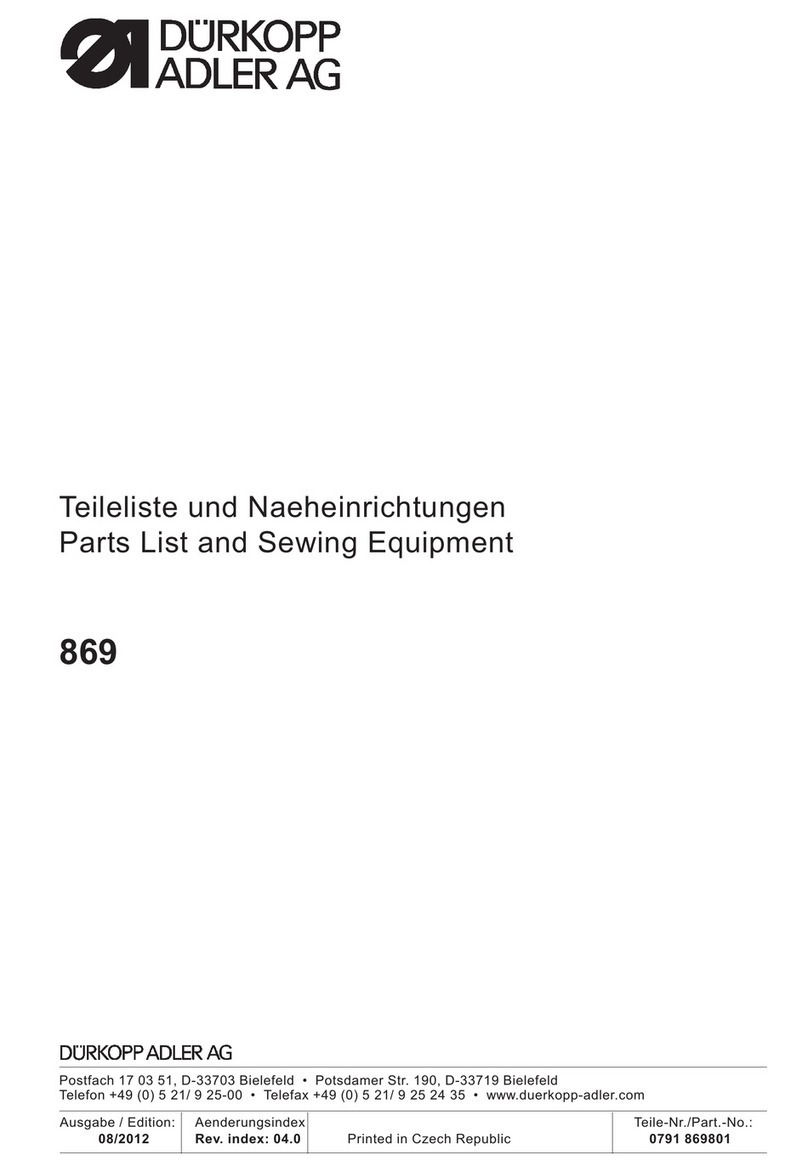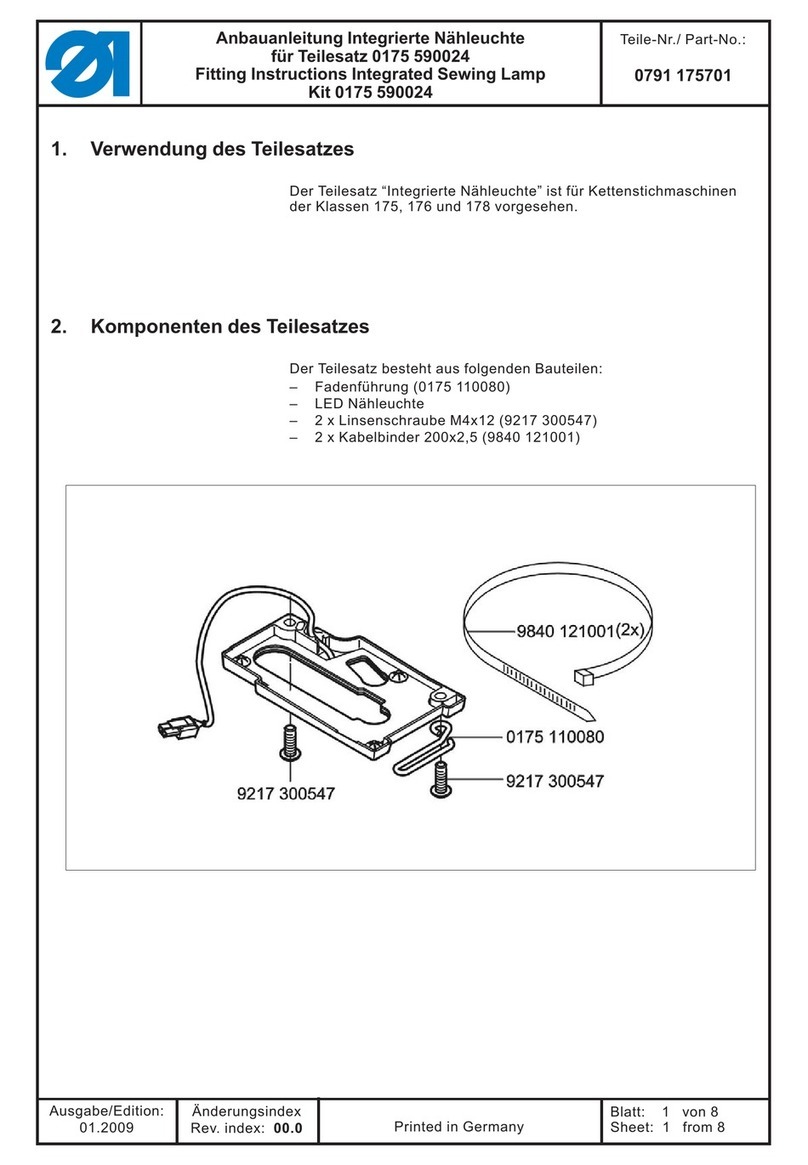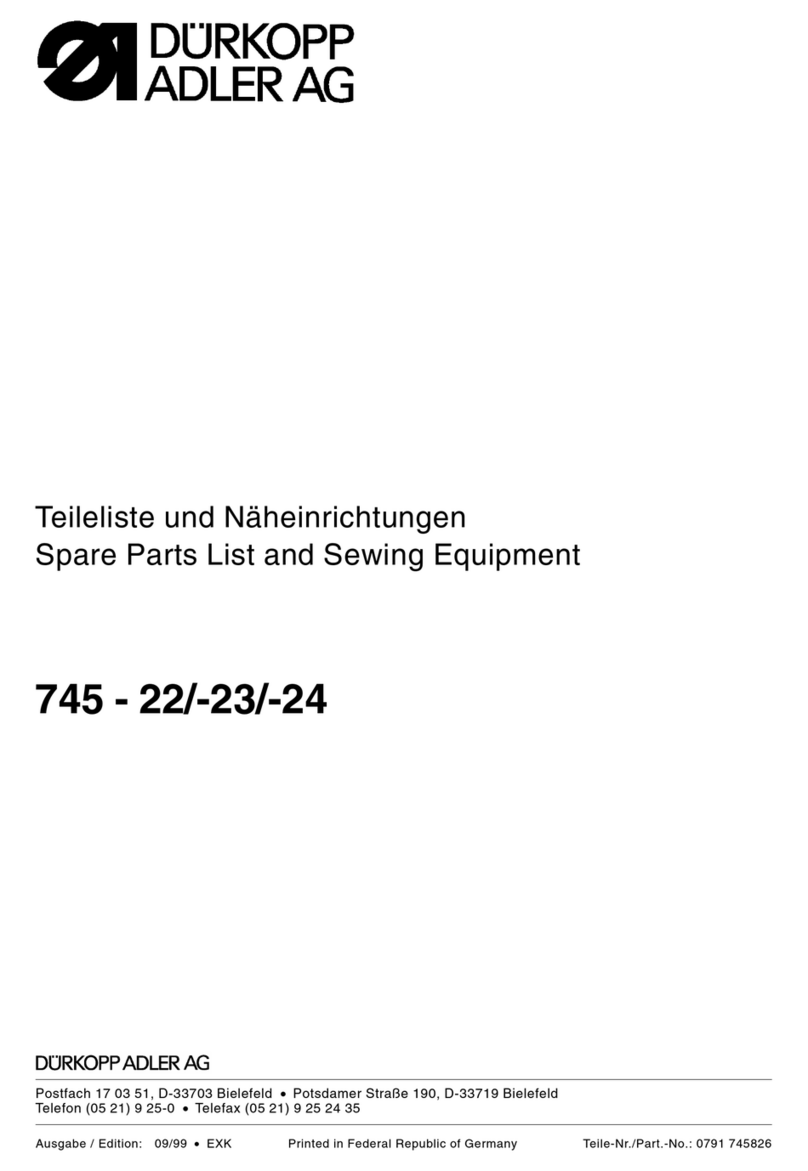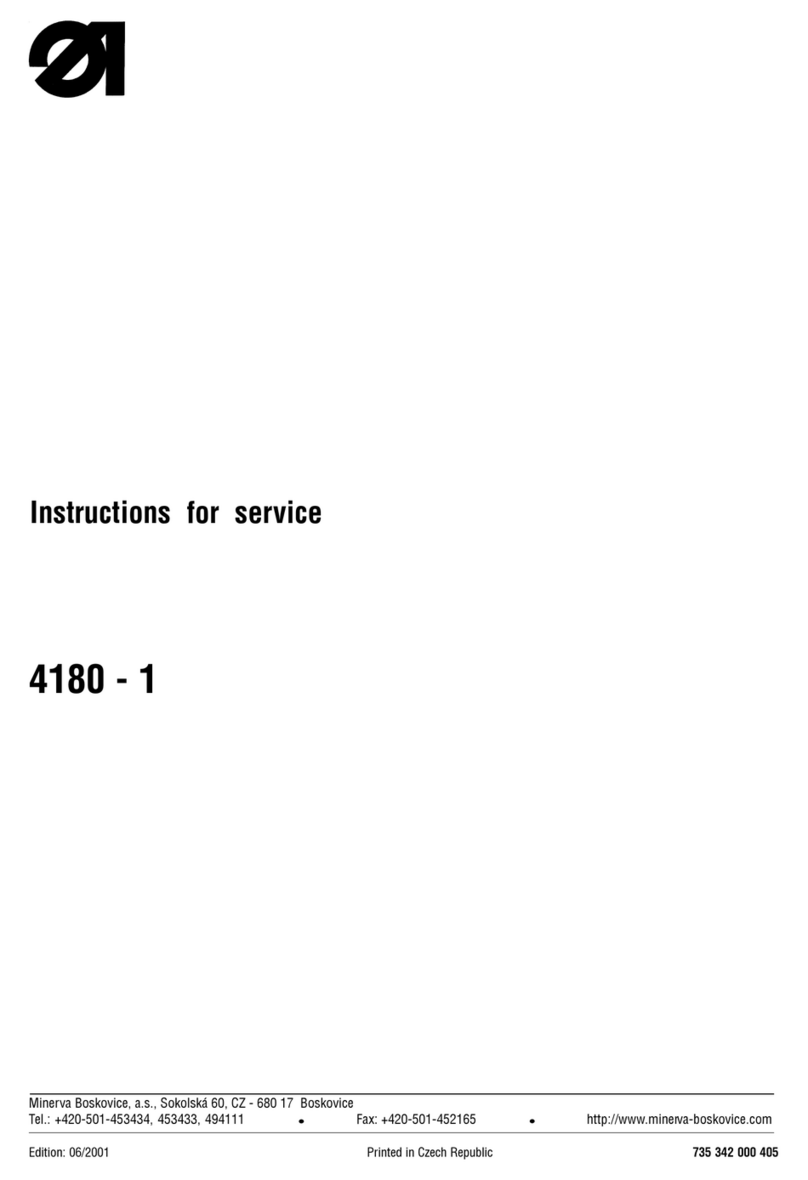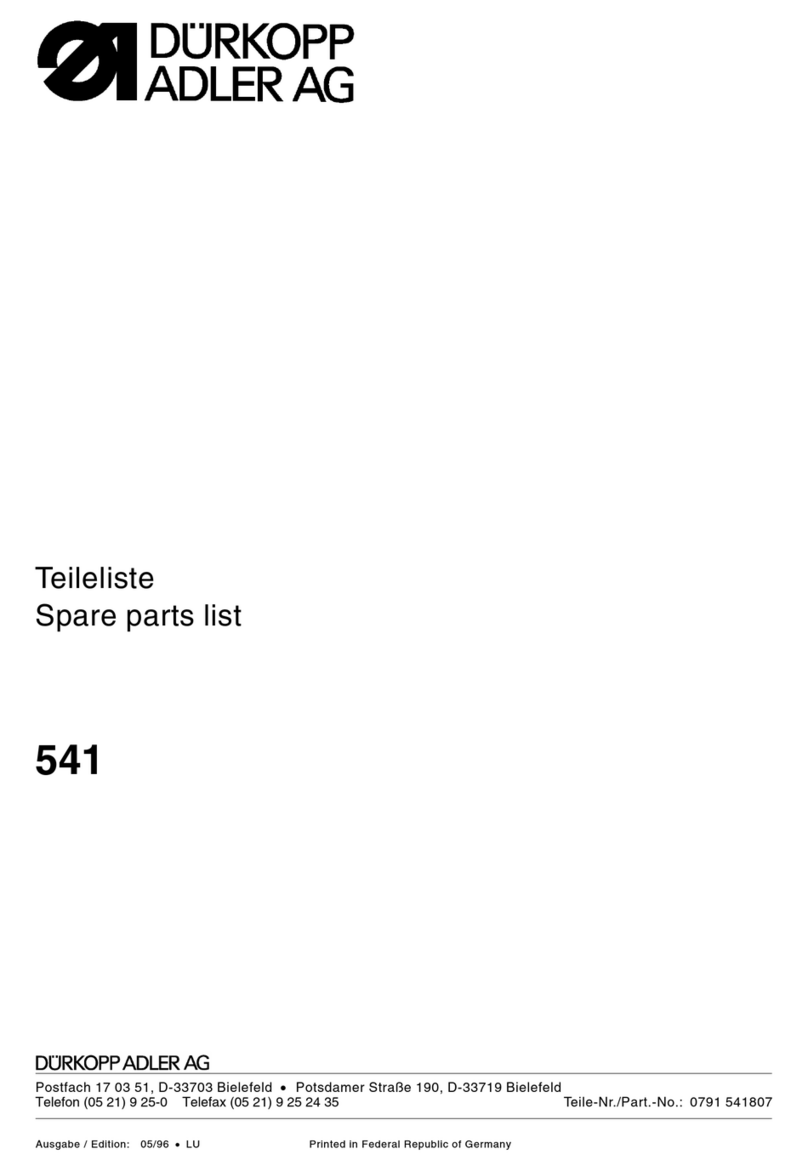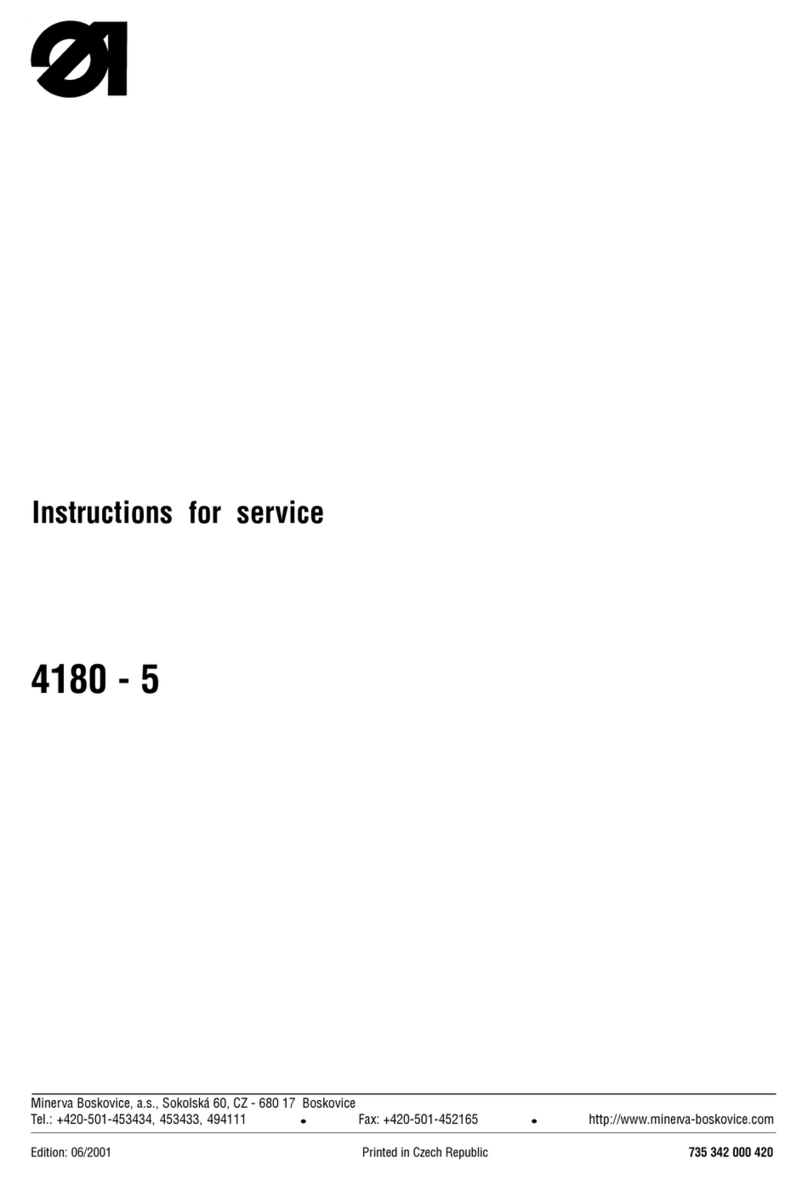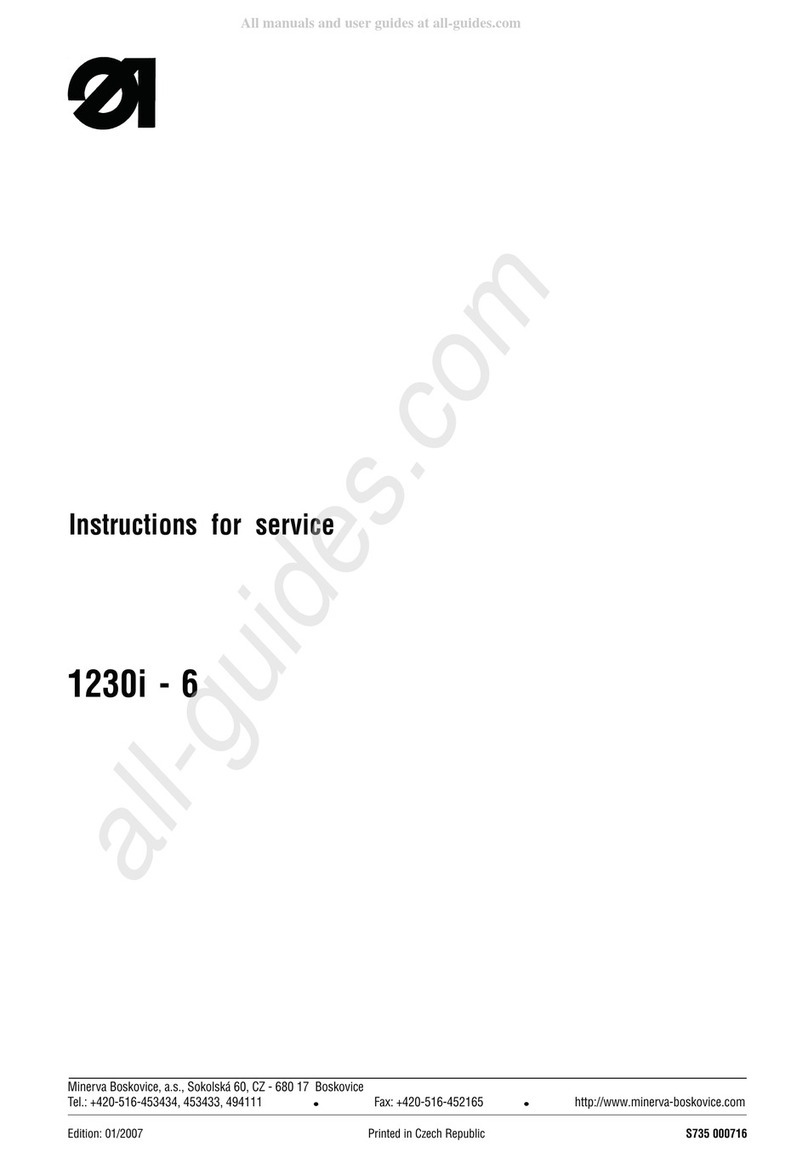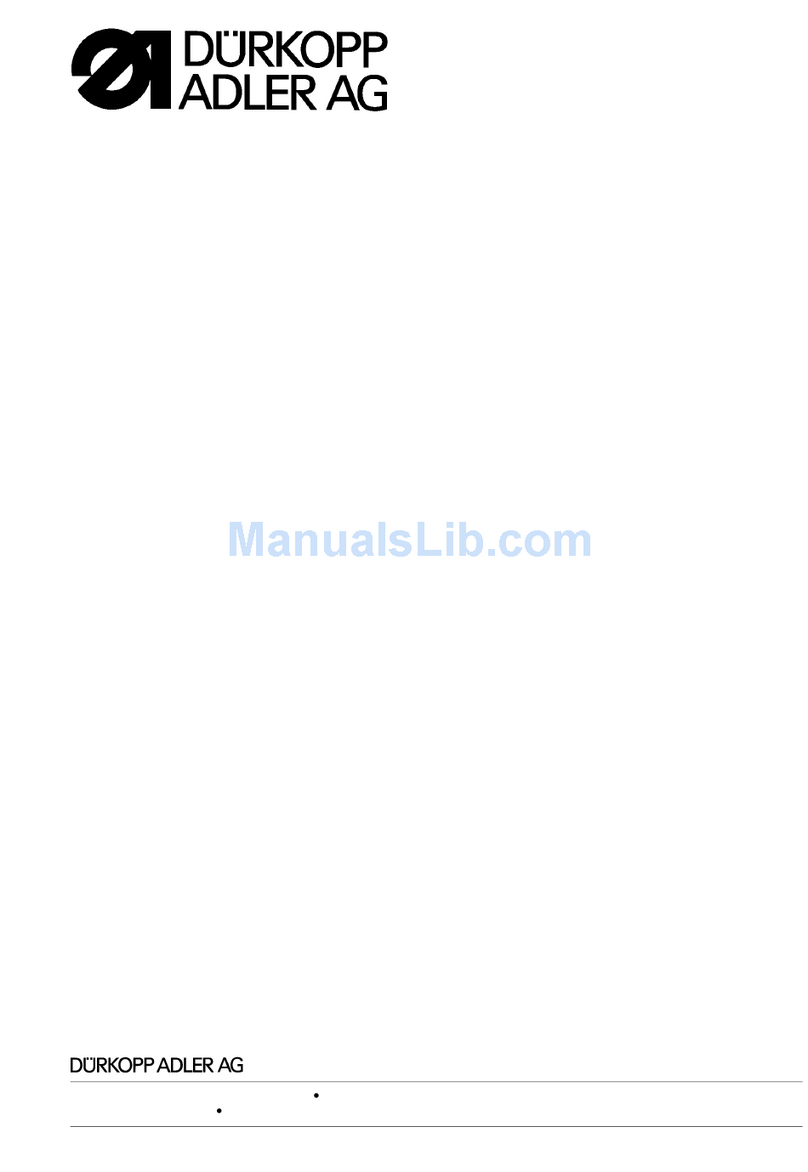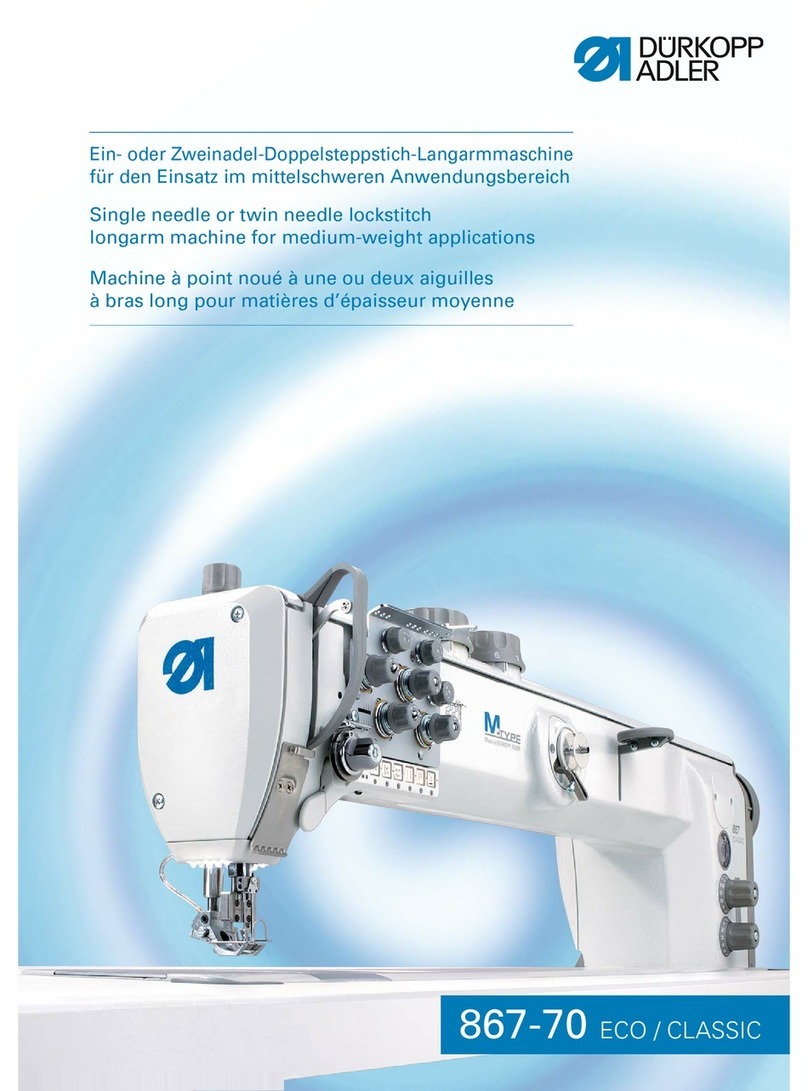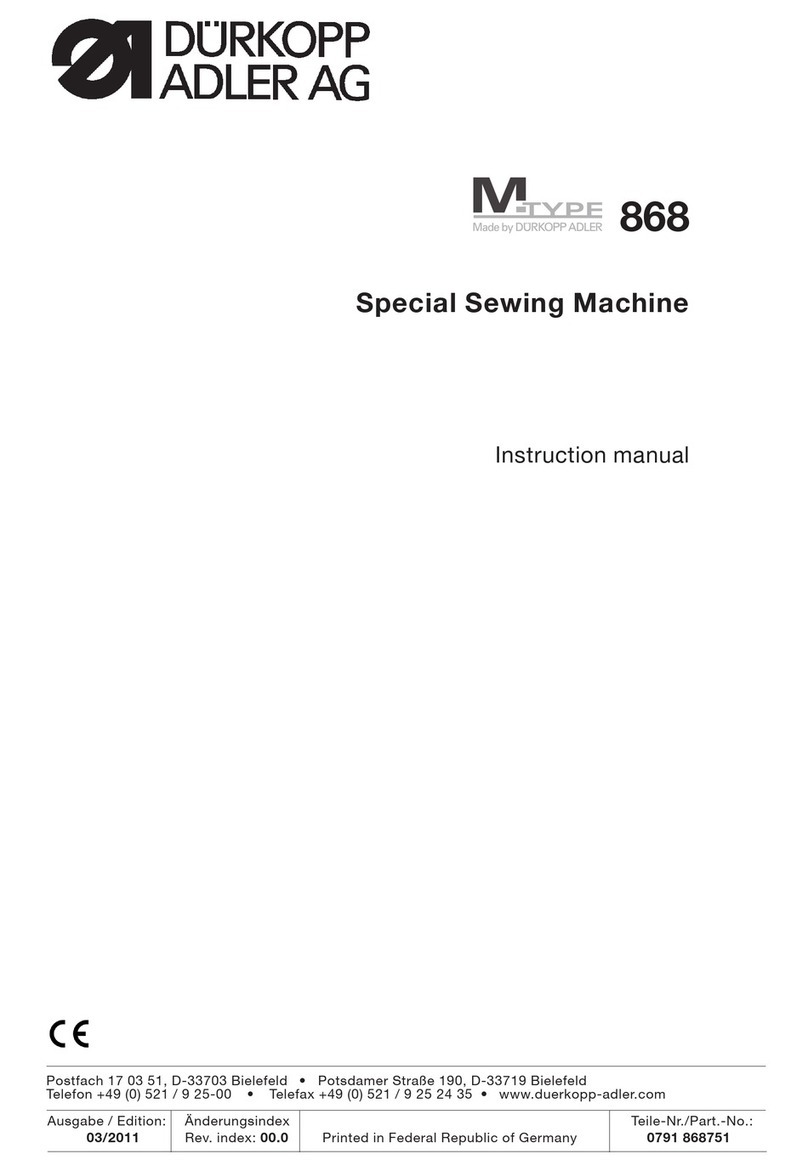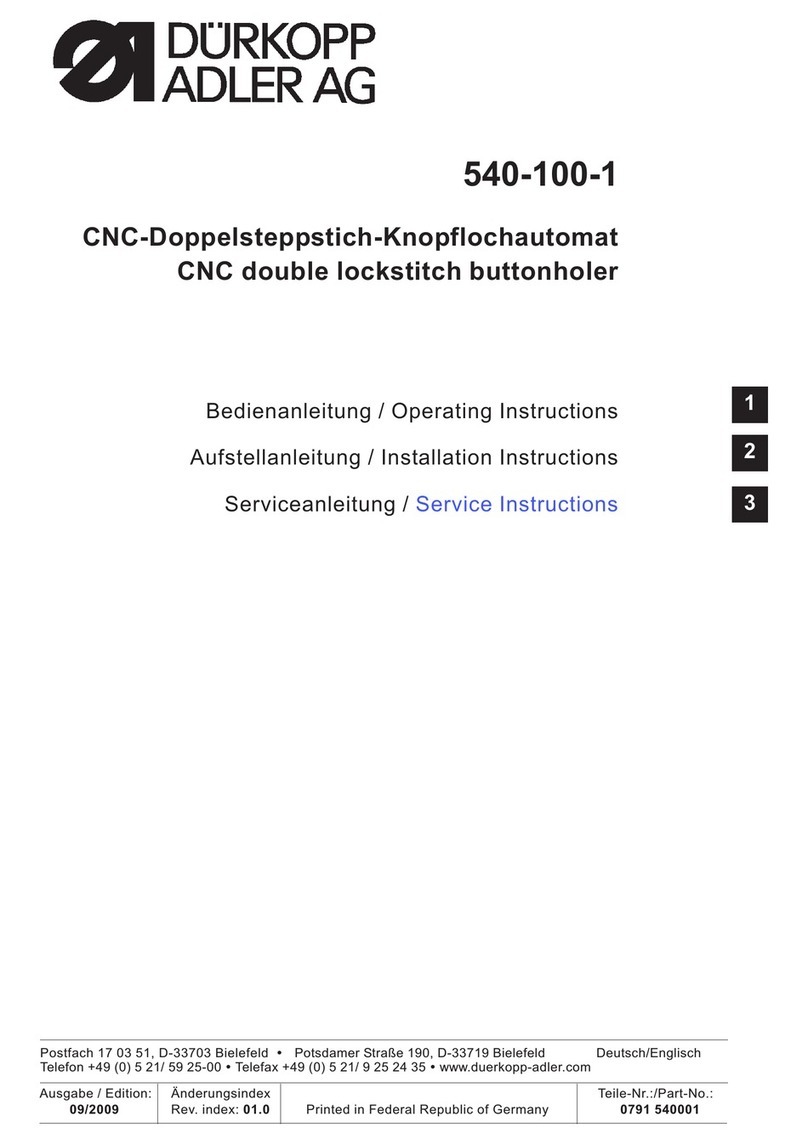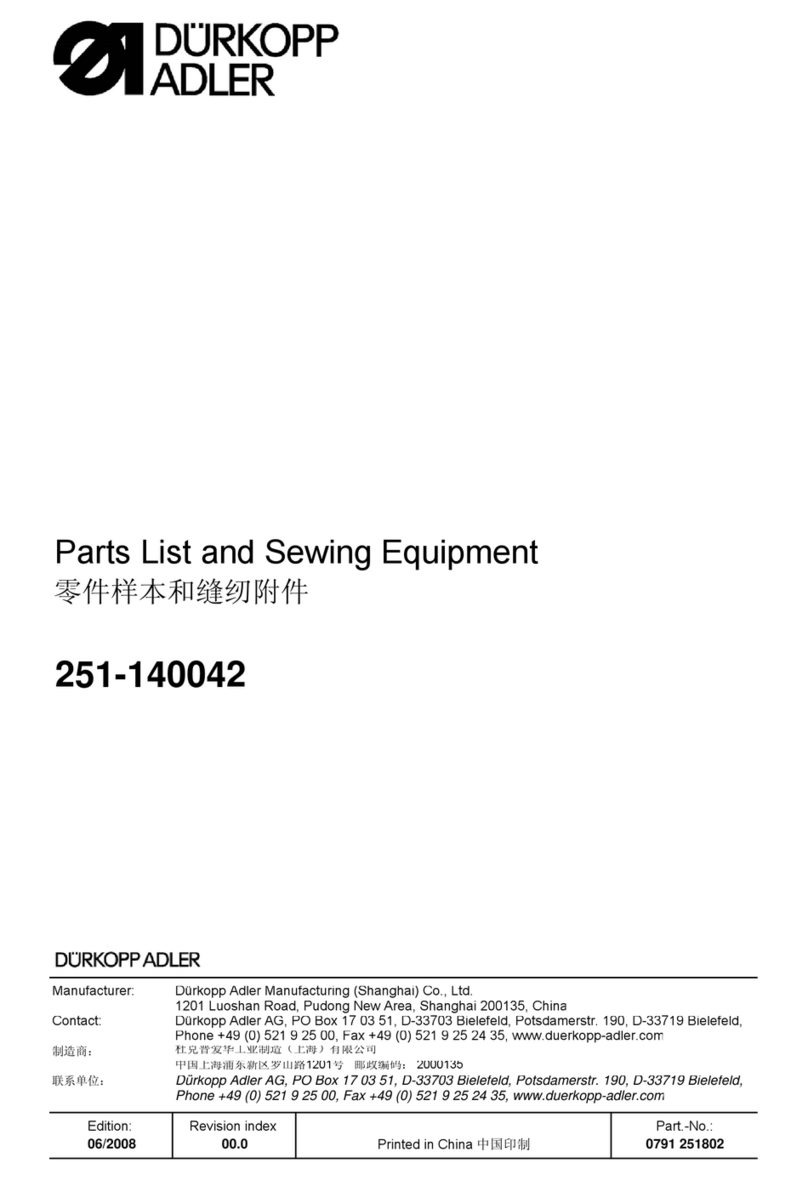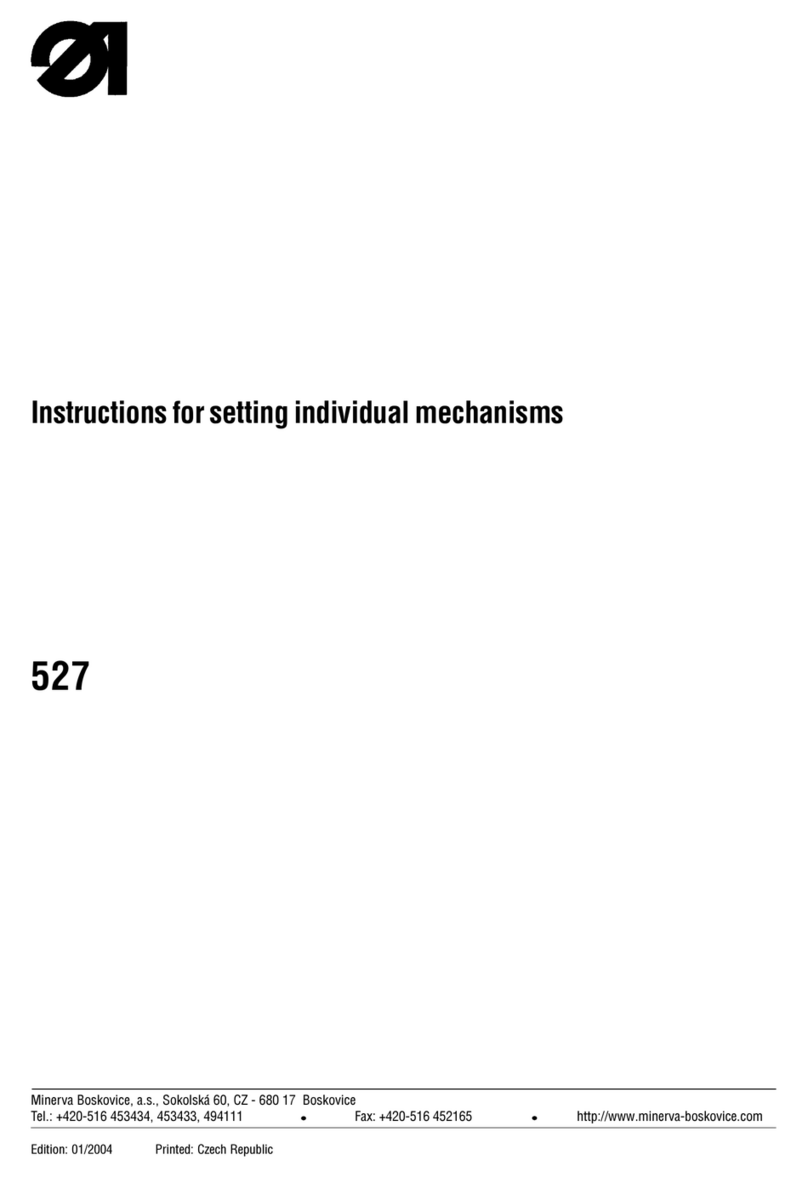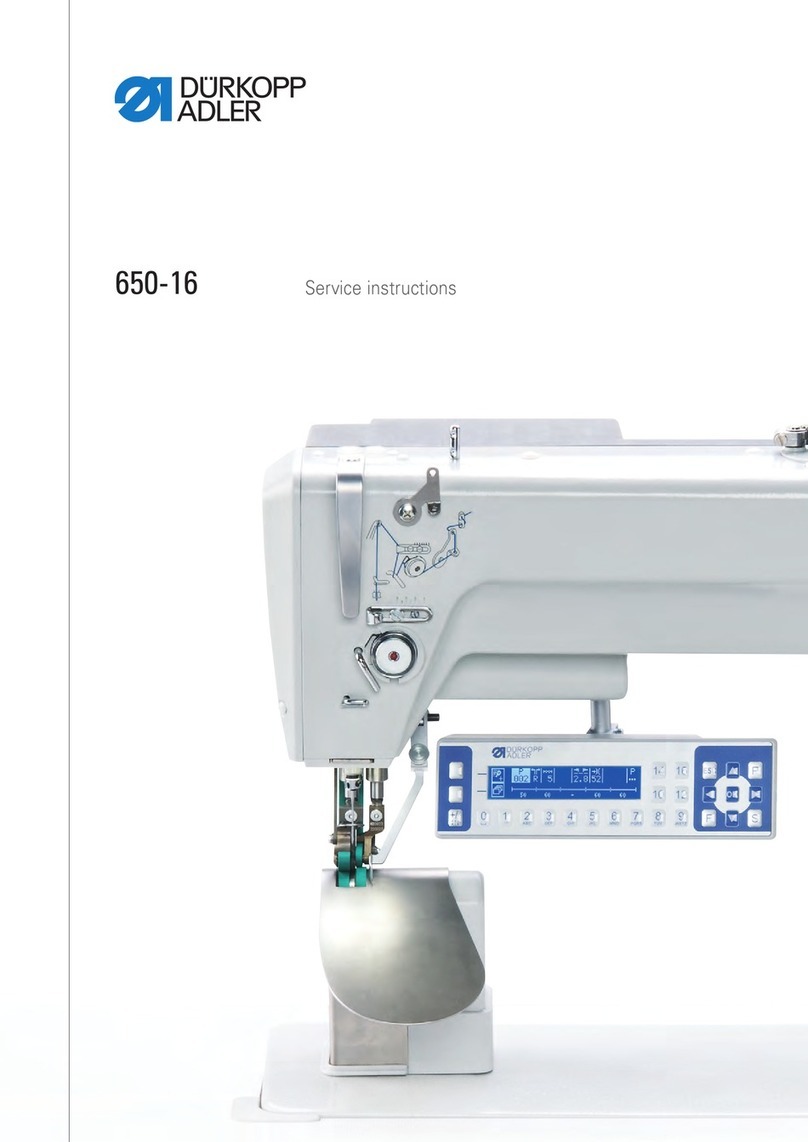
1
Part A - Instruction manual
1. Proper use of the machine
The machine can be used in the shoe uppers production for sewing with simultaneous trimming of the lining edge. The machine
is also used for setting together shoe parts and for decorative stitching. The combined feed provides for uniform slip-free feed
of all sewn work layers. The machine also can be used for similar operations in the fancy goods industry. It is used for upper
leather and similar materials, natural or man-made leather, also in combination with textile materials The trimming system used is
intended for a relatively stiff material, not for a soft or textile one The knife is driven by an auxiliary motor and ensures top-grade
trimming of the lining material, in particular in inner and outer arches and in sharp angles.
The machine sews with two-thread lockstitch. It is standardly equipped with needles of the 134 LL system which are suitable for
sewing leather. When sewing textile materials it is necessary to install needles of the 134 system. Only a dry material up to 6 mm
thick when depressed by top roller can be used. The material cannot contain any hard subjects, otherwise the use of an eye-
protective shield is imperative. Such a shield is not yet available to delivery. Synthetic, cotton, or core threads up to labelled
number 20 should be used. The use of other special threads is at the risk of the user who should take appropriate safety
measures, as the case may be.
For joining very hard or compact materials, the sewing speed must be reduced substantially below the value given in Table 3.
These special machines may be installed and operated only in dry and kept up rooms.
We as industrial sewing machine producers expect that our products are operated by trained workers so that all usual operation
steps and their possible risks can be considered known to them.
Machine noise level
The machine noise level has been measured in accordance with the standards ISO3746, ISO 11204 at the top sewing speed.
Laeq = equivalent noise level of the machine proper on its working place, converted to the % of machine operating time (dB) -
see the Table.
2. Machine description
It is a single-needle post bed sewing machine with two-step upper feed and lower wheel feed, with needle feed during the first
feeding step. The principal mechanisms are seated in antifriction bearings, rocking shafts and pins, in plain bearings. The feed is
transmitted from the stitch length regulation mechanism via friction clutch to the lower feed shaft, and from it by a roller chain
to the feed wheel. The top roller is driven from the lower feed shaft via indented belt, upper feed shaft, through the gear
transmission, vertical articulated shaft, and bevel gearing. The needle feed is derived from the same mechanism as the top roller/
feed wheel feed.The stitch length can be adjusted by a dial situated on the machine arm.
Caution!
Sewing speed prescribed as top limit speed for a given operation must not be exceeded under the risk of damage to
the feeding mechanism.
The reverse stitching is controlled by a hand lever or by a microswitch. A sewing set with interchangeable throat plate inlays
corresponding to the chosen needle size and distance between the needle axis and the work trimmer is mounted on the machine.
Top rollers with ø25 or ø 35 mm are available.The vertical hook is fitted with positive bobbin case opening and is secured by
overload release clutch with adjustable release moment. The machine uses a wick lubrication system with central oil supply.
The machine is fitted with standard vertical hook situated to the left of the needle, with friction-type bobbin winder. The machine
can be fitted with thread trimmer, electromagnetically actuated top roller lifting and reverse stitching, accessory lighting with
halogen lamp and, as the case may be, with further equipment. In machines without electromagnetically actuated top roller
lifting, the lifting is actuated by a knee lever or, for deliveries to Czech customers, by left-side treadle. In higher sub-classes, the
stop motor is either situated on the machine table top or as a minimotor integrated on the machine head.
The machine stand is fitted with a wedge and, depending on the top roller lifting version, with one or two treadles. The lower
horizontal work trimmer, spring-biassed both upwards, serves to trim he lining edge in inner and outer arches as well as in acute
angles. The trimmer knife is driven by a lever system from a separate motor situated under the bed plate. When switched out by
a press-button, it automatically takes up its inoperative position, and automatically switches on again when returned by the lower
lever to its operative position. The trimming motion length is adjustable. Various trimmer knives and a tilting sewn work guide can
be ordered with the machine.
Machine Noise level % of machine
type in dB operating time
4181i-3XX-100 82 20
4181i-3XX-200 79 20
4181i-3XX-300 73 20
www.promelectroavtomat.ru
